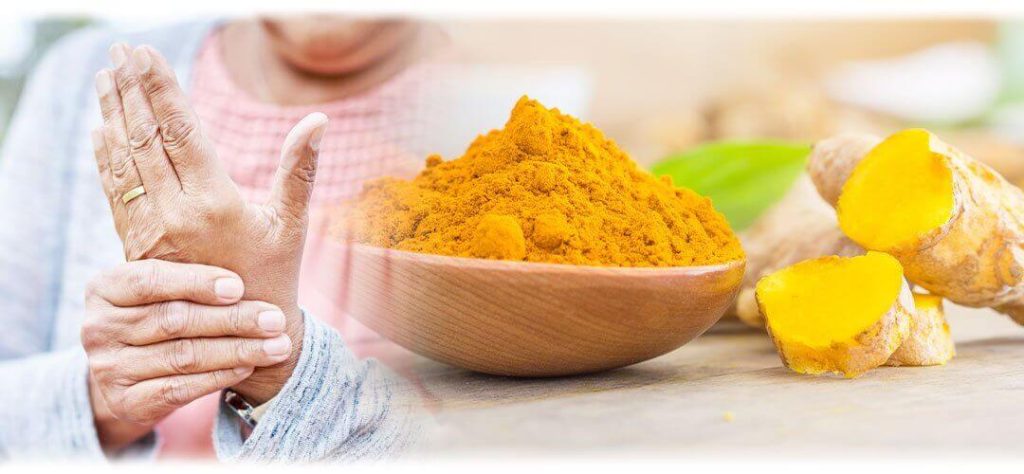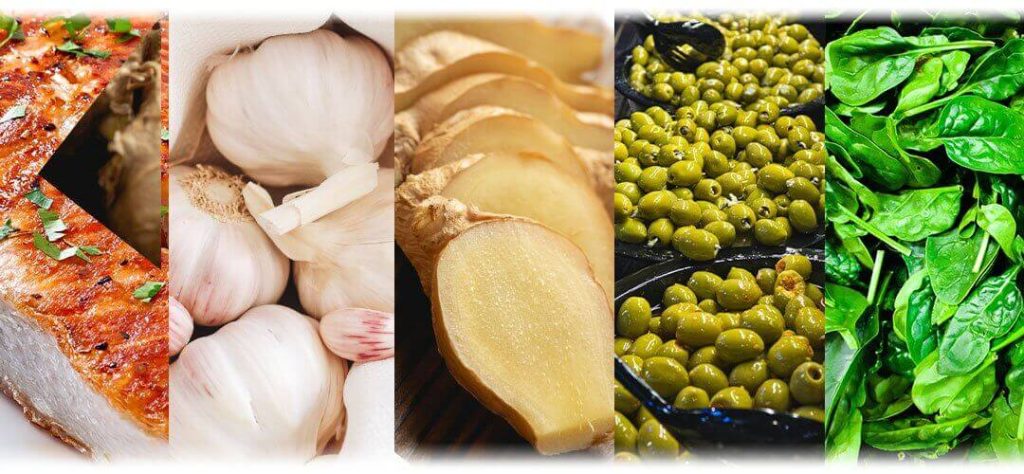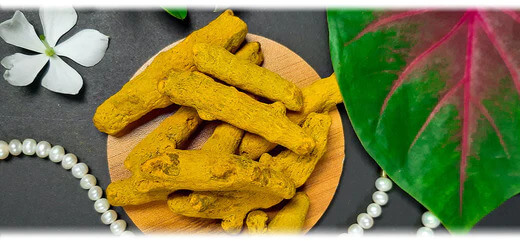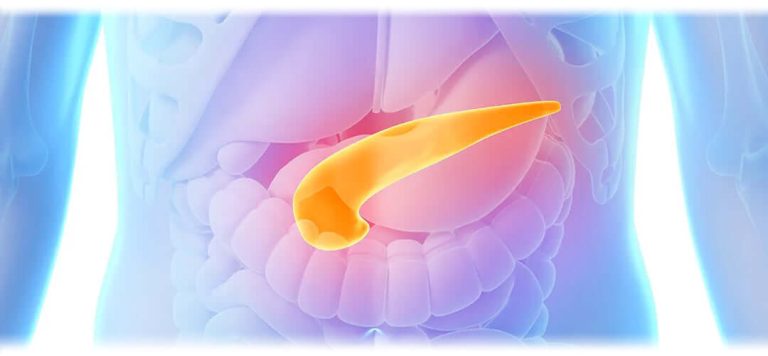Known as the golden spice due to its vivid hue, Turmeric is what gives curry and a host of other foods their deep yellow colour.
It is used widely in Asian cooking to add flavour and colour and has been used for hundreds of years as a medicinal spice. In more recent times, research has found that it contains compounds with properties which bring a wide range of health and lifestyle benefits.
Curcumin is the main active ingredient in Turmeric. It’s also found in Ginger. Curcumin has powerful antioxidant and anti-inflammatory properties, which support good immune system function and provide relief from chronic pain. It can also help to settle your tummy and ease the symptoms of sickness and diarrhoea. There are many ways to get more Turmeric into your diet.
In grated or powdered form, it can be used in salad dressings, sauces and marinades. You could also use it to brew a healing and detoxing cup of tea. However, if culinary creativity is not your thing, you can up your Turmeric intake with natural, nutritional supplements to ensure you receive the full benefits of this amazing ingredient.

Can Turmeric treat Arthritis?
Arthritis is an inflammatory condition that causes pain and stiffness in your joints, including your knees, elbows, wrists and fingers. Osteoarthritis, the most common type, occurs when the protective cartilage in your joints wears down. This creates friction when the bones in the joint rub together, causing pain and inflammation. Rheumatoid arthritis, on the other hand, is an autoimmune condition which causes your immune system to attack the cells lining your joints, again leading to inflammation and chronic pain. Although both forms of arthritis cannot be cured, the pain can be managed.
Because of its anti-inflammatory and pain-relieving properties, Turmeric can help ease some of the symptoms of arthritis, so you are not always in pain. Although the NHS doesn’t list Turmeric as an official arthritis treatment, evidence suggests that as a complementary treatment, it does have benefits. Turmeric has been used as a traditional remedy to treat pain and swelling for hundreds of years. Although evidence is limited, studies have found that daily consumption of Curcumin has similar effects to common anti-inflammatory medicines.
Other treatment for Arthritis
While Turmeric has many health benefits and can ease the symptoms of arthritis, there are other things you can do to manage the pain. Doing more exercise and maintaining a healthy weight will prevent any unnecessary strain on your joints and help slow the onset of osteoarthritis. Walking aids, insoles and splints can also help take the strain off your joints, particularly your knees, hips and ankles. In more extreme cases, surgery and physiotherapy can also help.

What foods are good for Arthritis?
While getting more exercise can help keep your joints supple and ensure they are functioning properly, there are several foods you can eat which may also help treat the symptoms of arthritis.These include:
Fatty fish
Oily fish like salmon, mackerel, sardines and trout are high in Omega-3 fatty acids, which have potent anti-inflammatory effects. Fish is also a good source of Vitamin D. Several studies have found that rheumatoid arthritis may be associated with low levels of Vitamin D, which could make symptoms worse.
Garlic
Garlic is another ingredient that offers several natural health benefits.
It is packed with components which have powerful anti-inflammatory properties and can help lower the risk of heart disease and dementia and ease the symptoms of arthritis. Garlic is also thought to support and strengthen immune system function.
Ginger
As we said before, Ginger contains the same active ingredient as Turmeric, so brings similar health benefits. Studies have found that Curcumin can block the production of toxins which lead to inflammation. It’s a versatile ingredient that you can add to teas, soups and drinks to add a fiery burst of flavour.
Olives
Much like fatty fish, olives and olive oil are high in Omega-3s, which help reduce joint swelling, slow cartilage destruction and decrease inflammation. As well as helping to ease the symptoms of arthritis, olives can help lower cholesterol and support good heart and circulatory system health.
Grapes & Cherries
Grapes, cherries and other berries are high in antioxidants and possess anti-inflammatory properties. Antioxidants help to prevent cellular damage caused by oxidative stress from harmful compounds called free radicals.
Dark, Leafy Greens
Dark, leafy greens like broccoli, spinach and Cavolo Nero are packed full of nutrients, some of which can help decrease inflammation caused by arthritis. They are also high in antioxidants, which can help ward off illness and infection and fight disease.
Are tomatoes bad for Arthritis?
There is a lot of information on the internet which suggests that tomatoes are bad for arthritis, but that might not be the case. Tomato is a common ingredient that’s widely used in cooking and has many health benefits.
They are packed with vitamins and minerals, most notably Potassium and Magnesium, but also Vitamin C, Vitamin B6, Lycopene and Fibre. The antioxidants that tomatoes contain help undo the damage caused by free radicals and can also help reduce pain and inflammation. However, like with all foods, if you eat too many, it can cause problems including upset tummy and nausea.
When it comes to arthritis, there is no hard evidence to suggest that tomatoes can make its symptoms worse. However, they do contain a compound called Solanine, which can aggravate pain and inflammation in certain people. Solanine can trigger the release of Histamine, which can lead to stomach acid and abdominal discomfort. However, the benefits of eating tomatoes in moderation far outweigh the complications that come with eating too many, so providing you don’t go too mad with the ketchup, you should be OK.






